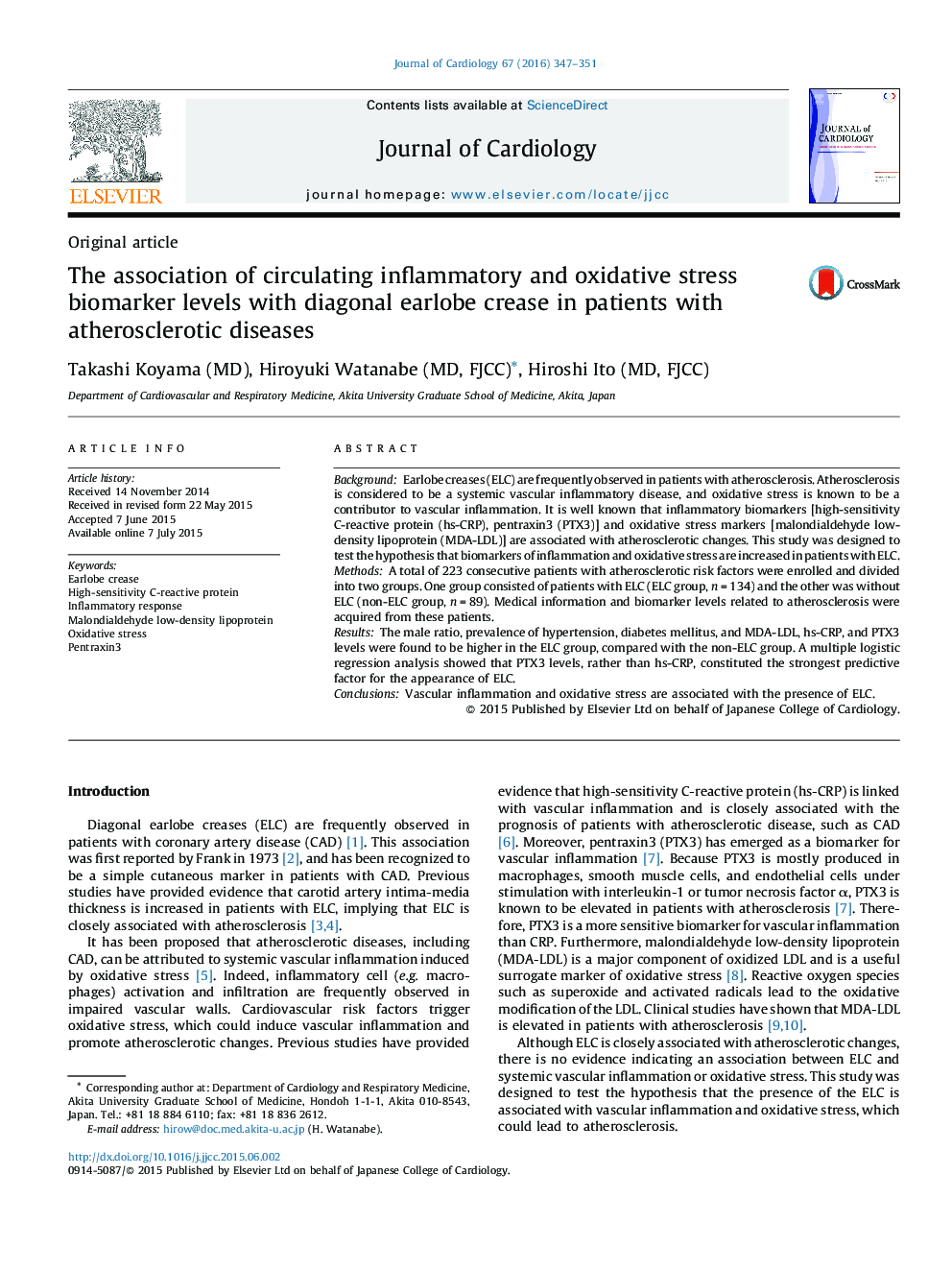| Article ID | Journal | Published Year | Pages | File Type |
|---|---|---|---|---|
| 2962863 | Journal of Cardiology | 2016 | 5 Pages |
BackgroundEarlobe creases (ELC) are frequently observed in patients with atherosclerosis. Atherosclerosis is considered to be a systemic vascular inflammatory disease, and oxidative stress is known to be a contributor to vascular inflammation. It is well known that inflammatory biomarkers [high-sensitivity C-reactive protein (hs-CRP), pentraxin3 (PTX3)] and oxidative stress markers [malondialdehyde low-density lipoprotein (MDA-LDL)] are associated with atherosclerotic changes. This study was designed to test the hypothesis that biomarkers of inflammation and oxidative stress are increased in patients with ELC.MethodsA total of 223 consecutive patients with atherosclerotic risk factors were enrolled and divided into two groups. One group consisted of patients with ELC (ELC group, n = 134) and the other was without ELC (non-ELC group, n = 89). Medical information and biomarker levels related to atherosclerosis were acquired from these patients.ResultsThe male ratio, prevalence of hypertension, diabetes mellitus, and MDA-LDL, hs-CRP, and PTX3 levels were found to be higher in the ELC group, compared with the non-ELC group. A multiple logistic regression analysis showed that PTX3 levels, rather than hs-CRP, constituted the strongest predictive factor for the appearance of ELC.ConclusionsVascular inflammation and oxidative stress are associated with the presence of ELC.
